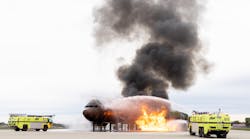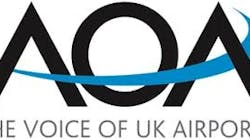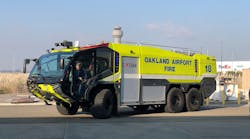By Victor J. D'Amato, CIH, CSP
Eye injuries occur at an estimated rate of 1,000 per day in the American workplace. That’s a very good reason to ensure employees at risk are protected from face and eye injuries. There are other reasons why face and eye protection in the workplace is so important, besides the regularity with which these types of accidents occur. One is compliance. Eye and face protection must be provided whenever necessary to protect against chemical, environmental, radiological, or mechanical irritants and hazards. An employer could be fined by OSHA for not providing an eyewash station, for instance, or even for not complying with the General Duty Clause to provide a safe and healthy work environment.
Cost is another strong incentive to prevent eye injuries. The financial price of these injuries is enormous and can range from $300 to $3,000 per case. More than $300 million per year is lost in production time, medical expenses, and workers’ compensation according to the Bureau of Labor Statistics (BLS). But, no dollar figure can adequately reflect the personal toll these accidents take on the injured workers.
The return on investment for creating and implementing an eye and face safety program is huge. Eye and face personal protective equipment (PPE) is inexpensive with a good pair of safety glasses costing less than $20. Compare that to the expense of eye injuries including emergency medical expenses and workers’ compensation, the possibility of a worker permanently losing sight in one or both eyes, the bad PR for the company, and the impact on worker morale.
What causes eye injuries?
The goal of face protection is to shield the eyes from injury. Most impacts to the face come from flying objects, usually particulates. When a particulate hits the face it might cause a cut or scratch and the skin will repair itself over time, given proper medical attention. If the particulate hits the eye, it causes direct damage and it is far more difficult for the eye to repair itself. BLS found that almost 70 percent of eye accidents resulted from flying or falling objects or sparks striking the eye. Injured workers estimated that nearly three-fifths of the objects were smaller than a pin head. Most of the particles were said to be traveling faster than a hand-thrown object when the accident occurred.
Contact with chemicals is responsible for one-fifth of occupational eye injuries. Other accidents are caused by objects swinging from a fixed or attached position, like tree limbs, ropes, chains, or tools which were pulled into the eye while the worker was using them.
Eye and face protection programs
As with any safety program, the first step in establishing an eye and face protection program is to conduct a hazard assessment. After determining the hazards, the written program should document what PPE will be used to protect against these hazards, how the PPE will be selected, how workers will be trained to properly use the PPE assigned to them, and how prompt emergency care will be provided in the event of an accident.
Hazards are assessed by occupation and work activity, and the hazard assessment will determine the specific type of protection required for each activity. OSHA has an excellent Eye and Face Protection e-Tool on its web site that provides a comprehensive hazard assessment, information about selecting PPE as well as OSHA requirements.
PPE selection
ANSI (American National Standards Institute) standard for eye and face protection is Z87.1 and the 2003 edition specifies requirements for safety glasses, safety goggles, face shields, and full face and hooded respirators.
Nearly one-fifth of injured workers with eye protection wore face shields or welding helmets. However, only 6 percent of workers injured while wearing eye protection wore goggles. If pouring or handling chemicals, goggles must be worn because the seal around the face prevents splashes and vapors from getting into the eye. Of the injuries to workers wearing eye protection, 94 percent resulted from objects or chemicals going around or under the protector.
ANSI-compliant safety glasses are appropriate and required for general hazards such as particulates and dust. Because goggles fit tightly on the face and provide protection around the eyes, they are necessary for high dust concentration, risk of chemical or liquid splash, or significant vapor concentrations. Depending on the hazard, there are different types of goggles to choose from -- direct vented, indirect vented, or non-vented. If there is a splash hazard, goggles and a face shield may by appropriate. If impact is also a risk, impact-tested goggles should be worn under face shields, since not all face shields are rated for impact resistance. The selection of safety glasses is infinite now as manufacturers like Harley-Davidson, Orange County Coppers, Smith and Wesson, and Body Glove have stepped up to meet employee demand. If the worker wears reading glasses with basic magnification, ANSI-approved safety glasses and goggles with reading magnifiers in the lenses are an option. It’s also possible to buy prescription safety glasses and goggles that are compliant with the ANSI standard. ANSI-compliant goggles and safety glasses are also available to fit over prescription glasses; but, I don’t recommend these for long-term use because they are uncomfortable and less likely to be worn.
Contact lenses can be a problem. If subjected to a chemical exposure, some chemicals can absorb behind the lens and hold the substance onto the eye causing further damage. If contact lenses must be worn, the worker should bring an extra pair in case of contamination or better yet, avoid contact lenses in hazardous situations altogether and use prescription goggles instead. Each chemical’s Material Safety Data Sheet (MSDS) should indicate if goggles are needed in addition to other required PPE.
All PPE, including eye and face protection, has a usable life-span. Most manufacturers recommend how frequently eye and face protection equipment should be replaced. If eye or face protection becomes damaged or distorted, it must be replaced to work properly. As far as the usable life of a product, a good rule of thumb is if your safety glasses are more than five years old, you need new ones since they may not be compliant with the latest ANSI standards.
Training
The written eye and face protection program should also include information about when PPE is necessary, how to wear it, adjust it, take it on and off and care for it, as well as the limitations of the equipment. The program should also outline training guidelines.
BLS reports that most workers are hurt while doing their regular jobs. Workers injured while not wearing protective eyewear most often say they believed it was not required by the situation. Even though the vast majority of employers furnish eye protection to employees at no cost, about 40 percent of workers report they receive no information on where and what kind of eyewear should be used.
There is no annual requirement for retraining; the onus of ensuring that employees understand when and how to use their eye and face protection is on the employer. However, common sense dictates that any employee wearing PPE improperly or not at all needs retraining, as does any employee involved in a new activity that is assessed as hazardous.
Emergency care
OSHA mandates that if the hazard exists, a means for flushing the eye must be provided. OSHA can cite an owner if he fails to provide that, regardless of whether he’s complying with a specific standard, under the General Duty Clause (obligation to provide a safe and healthy workplace). The eye and face protection program should include considerations for emergency eyewash stations that provide a full 15-minute flush. There are ANSI standards (Z358) for eyewash stations. In the field, eyewash bottles can be on hand for interim assistance until an eyewash station can be reached. There are also portable eyewash stations available that can dispense water for 15 minutes.
One final thought, it is estimated that 90 percent of eye injuries are preventable through the proper use of protective eyewear.
Anticipating health and safety issues and taking action to prevent them is a long-term and profitable investment for companies. For more information on industrial hygiene and methods for promoting health and safety in the workplace, as well as a listing of industrial hygiene consultants, please visit the American Industrial Hygiene Association website at www.aiha.org.
Victor J. D'Amato, CIH, CSP, is director of Atrium Environmental Health and Safety Services, LLC, Reston, VA.


